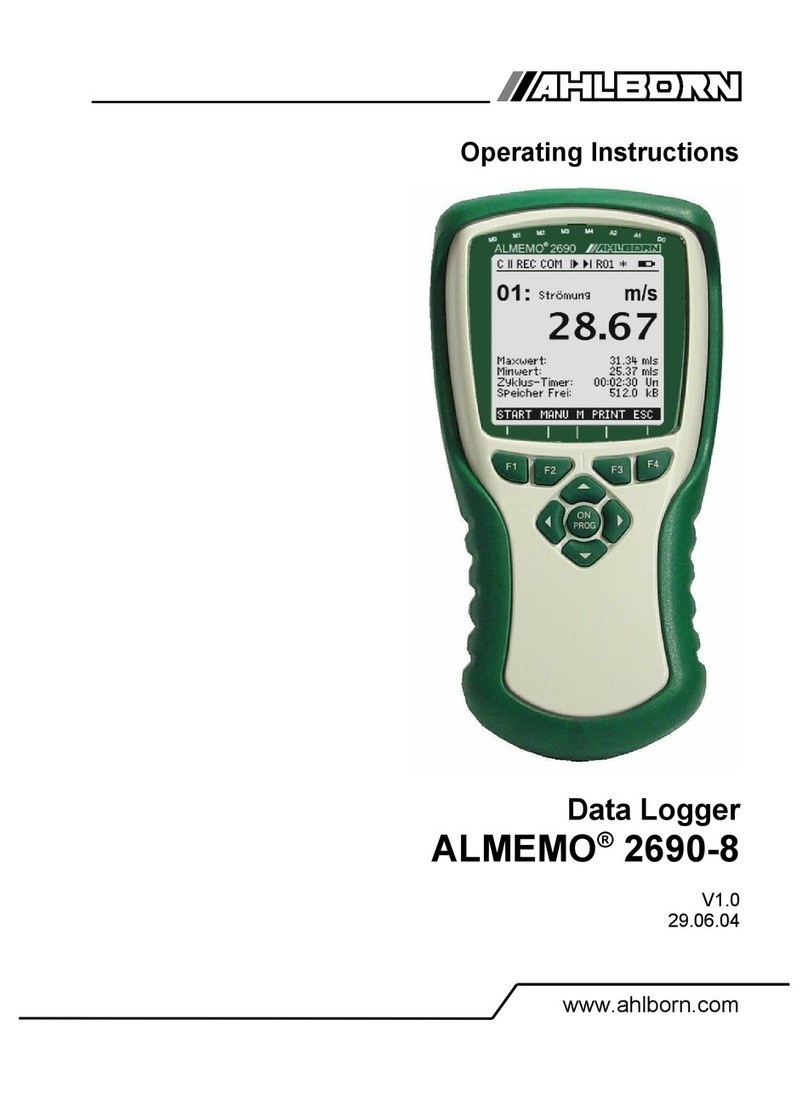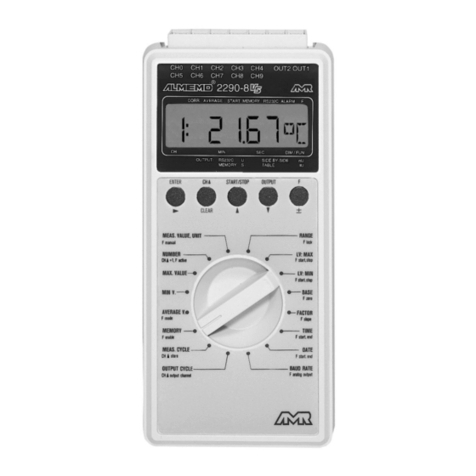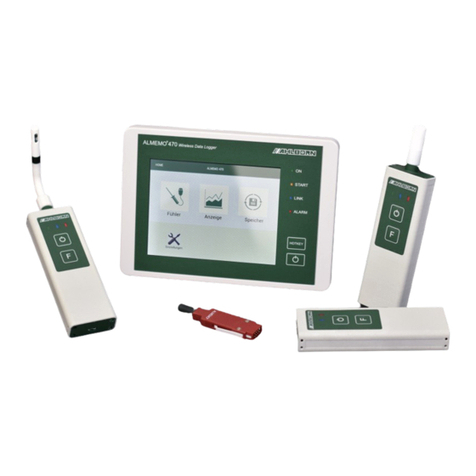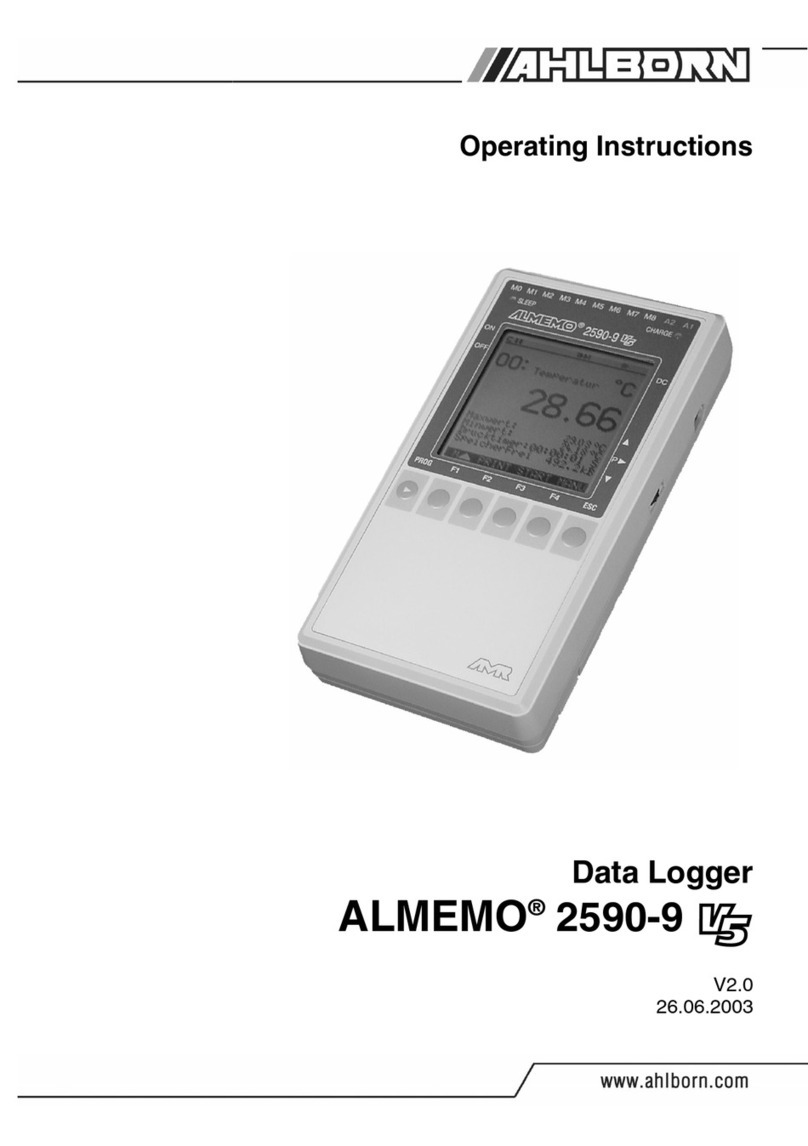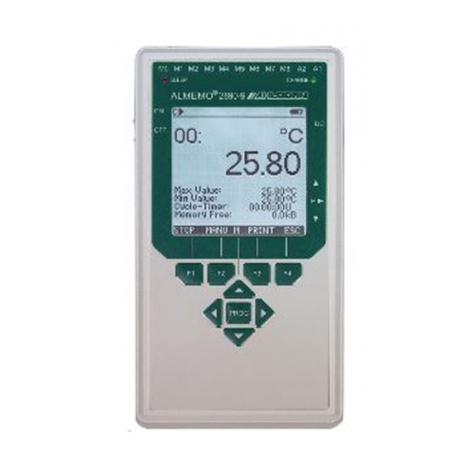
1. INTRODUCTION
The new data logger ALMEMO®3290-8
Version 5
is an instrument from the
unique product range of measuring devices that are all equipped with the
ALMEMO®connector system, which has been patented by Ahlborn GmbH. The
intelligent ALMEMO®connector provides important advantages with regard to
the connection of sensors and peripherals as all parameters are stored in an
EEPROM within the connector. As a result, the programming that usually has
to be performed for the connection is not required.
All sensors and output modules can be connected to all ALMEMO®measuring
devices in the same way. The operation and programming is identical with all
units. Therefore, all of the ALMEMO®measuring system items listed below are
described, in detail, in a separate ALMEMO®manual that is supplied with every
device:
Detailed description of the ALMEMO®system (manual section 1)
Overview of the device functions and measuring ranges (manual section 2)
All sensors with basic principles, operation, technical data (man. section 3)
The options for connecting existing sensors (manual section 4)
All analogue and digital output modules (manual section 5.1)
The interface module RS232, fiber optics, Centronics (manual section 5.2)
The entire ALMEMO®networking system (manual section 5.3)
All functions and their control via the interface (manual section 6)
A complete interface command list with all print outputs (manual section 7)
These operating instructions only cover features and controls that are specific
for a certain device. As a result, the sections dealing with the system control
via keyboard will only often provide a note referring to a more detailed
description within the manual (manual section x.x.x).
1.1 Function Range
The ALMEMO®3290-8 data logger has nine electrically isolated measuring
inputs with up to 36 measuring channels, a real time clock and a 500kB
memory for approximately 100,000 measured values. Two output sockets
allow for connecting any ALMEMO®output modules, for example, the analogue
output, digital interface, trigger input or alarm contacts. Several devices can be
networked by a simple connection between the devices. For easy operation it
is equipped with a rotary switch, keyboard and an 8½ digit LCD display.
SENSOR PROGRAMMING
The measuring channels are automatically programmed by the ALMEMO®
connectors of the sensors. However, the user can easily complete or modify
the programming via keyboard or via interface.
4 ALMEMO3290-8
Introduction

